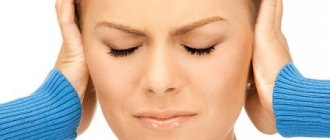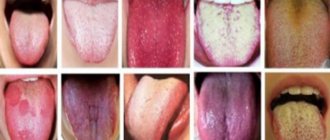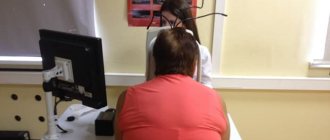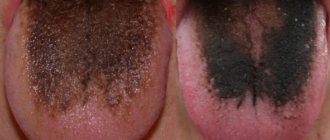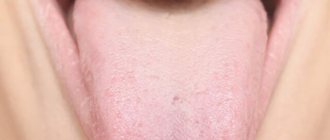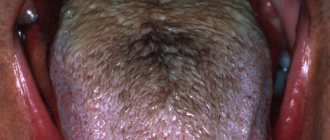When headaches and eye pain occur simultaneously, a person cannot always independently determine the cause and does not know which doctor to contact. Such a complex symptom can really cause difficulties, since it can occur both due to eye diseases and neuralgic disorders .
In any case, unpleasant sensations in the temples and eyes require examination by specialists, especially if they regularly make themselves felt.
Symptoms of pain in the eyes and temples
It is worth noting! Depending on the cause of the development of pain in the eyes and temples, this phenomenon may be accompanied by the following additional symptoms:
- a feeling of heaviness in the head generally or only in the temples;
- insomnia;
- constant fatigue, weakness, tiredness and apathy;
- dizziness;
- changes in blood pressure.
The symptom itself can have a different character and be pulsating, pressing or acute.
In the occipital region of the head
In the back of the head, cephalgia occurs when blood pressure increases, the cause of which is osteochondrosis, spondylosis, spondylolisthesis, anomalies in the development of blood vessels in the head or neck.
Severe pain in the back of the head occurs after nervous strain, as a result of spasm of the neck muscles, arteries of the head and neck, and disruption of the outflow of venous blood from the head. It worries patients suffering from occipital neuralgia, vertebrobasilar insufficiency, spinal diseases, and migraines. A sharp headache in the back of the head often occurs with the development of a hypertensive crisis. Sharp, bursting, pulsating headaches in the back of the head are accompanied by pallor of the patient’s face, generalized hyperhidrosis, dry mouth, heart pain and tachycardia.
Chronic arterial hypertension with a slight increase in blood pressure is also characterized by the development of pain mainly in the occipital part of the head. The headache bothers the patient immediately after waking up, intensifies with physical activity, and is often accompanied by swelling of the lower eyelids. Pain is caused by a violation of the outflow of venous blood from the vessels of the head.
Causes
Such signs always refer to the head, and they only radiate to the eyes, although in case of infectious lesions (this is one of the causes of the symptom), pain in the eyes and temples has the same origin.
The following are the main reasons for this violation:
- Migraine . Pathology of a neurological nature, the origin of which cannot always be determined. A distinctive feature of the symptom is spontaneous attacks, sometimes occurring for no apparent reason. The pain is throbbing and can spread from the temples to one or both halves of the head. Treatment is prescribed after diagnosis and is carried out according to an individual scheme.
- Problems with intracranial or blood pressure . Aches in the eyes and temples are always accompanied by fatigue and apathy.
- Trigeminal neuralgia . It occurs as a result of inflammatory or infectious diseases and has a sharp pulsating character. In complex cases and with developing complications, treatment is prescribed in a hospital setting. The disorder cannot be treated with symptomatic medications: the underlying disease must be eliminated.
- Osteochondrosis. With this disease, the blood supply to the brain is disrupted, since the problem affects the cervical spine, reducing circulatory activity. Unpleasant sensations begin in the back of the head and over time radiate to the temples and move to the eye area.
- Glaucoma. The only disorder in which the main affected area is the eyes, and the aches spread to the temples from them. Since this disease can be accompanied by clouding of consciousness, nausea and weakness. In the first stages, in the absence of visual disturbances, it is confused with poisoning, which is also accompanied by pain in the eyes and head.
- Sarcoidosis. This pathology affects the lungs, but can affect many other body systems, including the organs of vision. Additional signs in addition to pain are redness of the eyes. Spasms occur from the nervous system, which leads to aching in the head.
- Temporal arteritis. Damage to the temporal arteries, most often occurring in old age due to structural changes in the vessels. In such cases, the pain is concentrated in the temporal region and may not always radiate to the eyes.
- Malignant or benign tumors in the eye orbit or in the brain . In the first case, everything is clear - destructive processes also cause painful sensations. If we talk about benign formations, they may not always manifest themselves in the form of pain, and the nature of the unpleasant sensations depends on their type. So, with neuromas, the pain is concentrated in the eye area, and with hemangiomas, the patient feels pain in the temples.
- Cluster violations . They most often do not have their own causes and are of a burning, sharp nature, which is sometimes difficult to associate with any external or internal factors. The main location is the temporal region on the left or right side. The pain goes only to the eye located on the same side.
- Pregnancy. During this period, aches in the temples are associated either with hormonal changes or (in later stages) with weight gain, which is not typical for slender women in their normal state and requires the expenditure of a large amount of the body's resources, hence the load on the circulatory system and blood supply disorders.
Important! Such pain can also occur in weather-dependent people when the weather changes, but specialists are not able to fully treat this condition and are ready to offer such patients only painkillers.
MRI at the MedSeven clinic
You can undergo a high-level examination of the brain and other body systems at the MedSeven diagnostic clinic at any time of the day. We guarantee maximum accuracy of results thanks to:
- highly qualified doctors performing MRI;
- using a powerful Philips Intera 1.5 Tesla tomograph;
- responsible approach to the implementation of each procedure.
Surgeons in Israel, Germany, and the USA are guided by images taken in our diagnostic center when prescribing and performing operations. You can make an appointment either by phone or online on the website of our medical center. We work 24 hours a day, seven days a week. After undergoing an MRI, you will receive a conclusion within 15-20 minutes, as well as the opportunity to consult a doctor with a 50% discount.
Get an MRI of the brain in Moscow >>>
The service includes:
- Study
- Disk with image
- Film is paid separately
- Transcription by a radiologist doctor
Features of pain localization
Most often, pain in the temples and eyes spreads symmetrically to both halves , but sometimes the pain syndrome affects only the left or right side of the head and the organ of vision on the corresponding side.
Pain on the left may indicate an impending stroke , but mostly this happens after it.
In such people, pain in the left temple, radiating to the eye, may continue for the rest of their lives.
The side of localization may depend on the side of the trigeminal nerve lesion, as well as on the location of the tumors.
If the tumor is strongly displaced from the center to the left or right side, then it is on this side that the pain will be felt more clearly.
Headache and tinnitus
Headache and tinnitus are signs of otitis media and sinusitis. In this case, patients' body temperature rises. The pain radiates to the eye, teeth, jaw. Headache in the crown area often occurs for the following reasons:
- After severe stress;
- During a migraine attack;
- As a result of overstrain of the neck muscles;
- After abusing alcoholic beverages and smoking;
- Due to traumatic brain injury.
Cervicogenic headache, the symptoms of which indicate problems with the spine, is a secondary phenomenon. Such pain appears with protrusion of the intervertebral discs and the development of spina bifida in the cervical spine, severe tension in the neck muscles, wear of the vertebrae, and compression of the nerve root. A tumor of the cervical spine also causes severe headaches and tinnitus.
Should I see a doctor?
Note! If such a symptom appeared for the first time, it was managed to stop with the help of an anesthetic and it does not appear again - there is no reason to worry.
But if pain attacks recur regularly and intensify, you need to visit a therapist.
He prescribes diagnostics , which usually includes urine and blood tests, MRI and CT, angiography of cerebral vessels, and then refers the patient to an ophthalmologist or neurologist (depending on what assumptions about the diagnosis arise).
Headache with cervical osteochondrosis
With the development of cervical osteochondrosis, the nerve roots extending from the spinal cord are compressed.
Patients are bothered by neck pain that radiates to the head. The vertebral arteries run along the spine in the neck area. They carry oxygen through the blood to the brain. With cervical osteochondrosis, the blood flow in them is gradually disrupted. This occurs due to compression of the vessel by a displaced spinal disc, a strained muscle, or a bony growth on the vertebra. Without adequate therapy, disorders increase, and vertebral artery syndrome gradually develops. It is manifested by headaches, dizziness, frequent loss of consciousness (especially with sudden turns of the head), severe fatigue and decreased performance.
What are the ways to relieve pain?
For pain in the temples and head, professional (often complex) treatment is required, which can be prescribed by a therapist or a highly specialized specialist .
But on the part of the patient himself, symptomatic therapy is allowed, and first of all, this is taking painkillers , from which you can choose the following:
- aspirin;
- ibuprofen;
- paracetamol;
- triptan;
- spasmalgon.
If the patient is aware of problems with blood pressure or this is revealed during the examination, pressure stabilizers (enam, renitec, captopril) can be additionally used .
Need to know! Sometimes the necessary medications are not at hand - in such cases, the person himself is able to provide emergency assistance to himself, eliminating the pain or reducing its intensity.
If possible, apply a few drops of mint or eucalyptus essential oil or a warming agent (for example, finalgone) to the temples, rubbing such products with your fingers for several minutes.
At home, you can relieve pain by applying a cold compress made from a damp cloth to your forehead.
Additionally, you can drop a few drops of mint or rosemary oil or tea tree oil on it.
In the latter case, the compress should be additionally wrapped in cellophane, since tea tree extract can cause a chemical burn to the skin.
also drink black or green tea, adding a spoonful of honey , and also eat a handful of walnuts , adding a little honey and a piece of grated lemon with zest.
Stay up to date! The safest and most effective massage is that you can perform it yourself in several ways:
- Mentally drawing a line on your head from ear to ear, you need to determine its center. You need to press on this point for about two minutes with your index finger until pain appears in this place.
- After taking off your shoes and socks, you need to find your left and right feet and use your thumbs to alternately massage both feet for two minutes (during this time you need to make one hundred presses). This is a method of Chinese medicine, and despite the unobvious connection with headaches, this method helps many.
- Using the index fingers of both hands, you need to feel the small depressions on the outer corners of the eye (this is the area between the border of the orbital bone and the eyeball). To reduce pain, it is enough to perform several simultaneous presses on the left and right sides.
- There is a point above the nose, strictly in the middle between the eyes at the level of the eyebrows. You need to press on it with your index finger 20-30 times - and the pain will begin to subside.
Causes of headaches in men
Men are most often bothered by cluster pain. It is localized in the temple area and the eyeball. Pain of varying intensity in men occurs during a respiratory disease, an infectious lesion of the body, after an injury, or during the development of a brain tumor. Headaches localized in the back of the head occur with arterial hypertension, stroke, and traumatic brain injury. Often men experience severe headaches accompanied by nosebleeds. The reasons for the violation may be:
- Diseases of the circulatory system;
- Failure of endocrine organs;
- Cardiovascular diseases;
- Meningitis.
- Stroke;
- Tumors of the brain or nasal cavity;
- Hypertension;
- Overwork.
Expert opinion
Author:
Tatyana Aleksandrovna Kosova
Head of the Department of Rehabilitation Medicine, neurologist, reflexologist
90% of the population has experienced headache symptoms at least once in their life. Such data is provided by the World Health Organization. In 20% of cases, the headache is permanent. The ratio in the morbidity structure among men and women is 1:3. Neurologists identify various causes of headaches. The most common etiological factors are migraine and tension headache. Migraine is diagnosed in 20–30% of cases, and tension headaches account for 50–70%.
A headache can be a symptom of a serious illness. Therefore, if a pathological sign appears frequently, as well as in the presence of other symptoms, you should consult a doctor. At the Yusupov Hospital, neurologists pay close attention to the treatment of various types of headaches. Diagnosis of possible causes is carried out using x-rays, MRI, CT, EEG, angiography and laboratory tests. If necessary, additional studies are prescribed. Individually selected therapy allows you to stop an acute attack and prevent the re-development of the pathological symptom. The drugs used are verified for quality and safety. Treatment regimens comply with international recommendations for headache therapy.
Methods for diagnosing pain in the left hemisphere
To determine why the left side of your head hurts, you will need a full examination. Neurologists diagnose diseases that can lead to this symptom. According to their recommendations, a number of examinations are carried out, the results of which can be informative in determining the cause of the headache and making a diagnosis:
- collecting medical history data - it is important for the doctor to know about the conditions for the occurrence of headaches, its nature and strength, as well as the patient’s lifestyle and habits, old injuries and diseases;
- Ultrasound examination of cerebral vessels (Dopplerography) is a method by which you can evaluate the speed of blood flow and the degree of filling of blood vessels;
- encephalography is a technique that allows you to examine the functional activity of the brain;
- MRI is one of the main diagnostic methods, more often used to identify tumors, but it is also informative for other pathologies.
At the Clinical Brain Institute you can undergo a full examination and determine the cause of your headache. The test results will show a complete clinical picture, on the basis of which it will be possible to select an individual treatment and prevention regimen.
